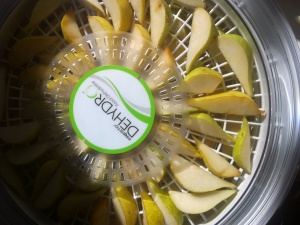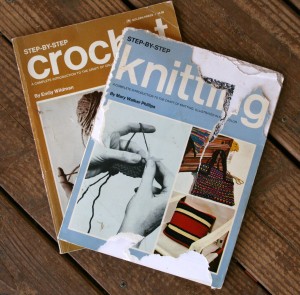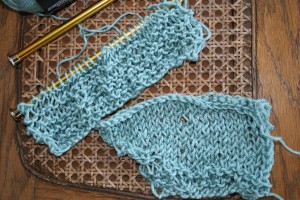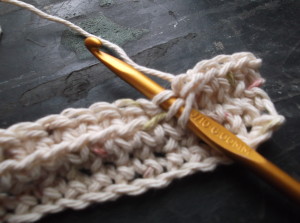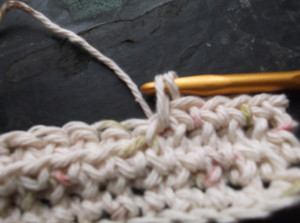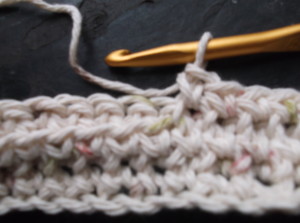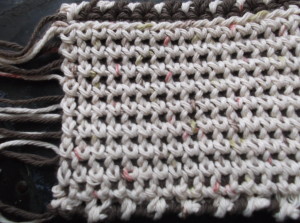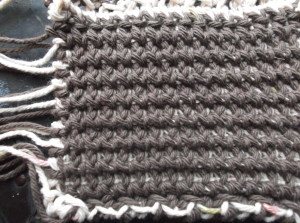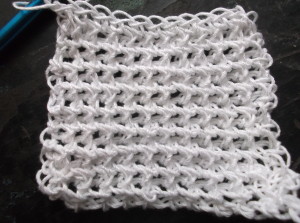 Sometimes it seems like time flies in the wink of an eye…again it seems to be that time of year for me. The kids have started back to school, I am getting the fruits from the orchard harvested (I am making my first attempts at using a dehydrator this year, so far it has been a success), and my fingers are nimbly working on various designs that you’ll see out in the world this next Spring & Summer.
Sometimes it seems like time flies in the wink of an eye…again it seems to be that time of year for me. The kids have started back to school, I am getting the fruits from the orchard harvested (I am making my first attempts at using a dehydrator this year, so far it has been a success), and my fingers are nimbly working on various designs that you’ll see out in the world this next Spring & Summer.
Working my flying crochet hook, I have undertaken a couple of new techniques, some that I have not undertaken for a while. I would like to share with you one that I am working on that I will admit is outside of my complete comfort level…beading.
I believe that beads can really add to a crochet design, that they give a nice texture difference, sometimes some needed weight for a project, and sometime just a hint of added sparkle; so why is it not a constant wheelhouse in my work…I hate threading those little beads on the yarn. It seems like a daunting task and I inevitably get it tied in knots, it is just that one added step that doesn’t allow me to mindlessly crochet.
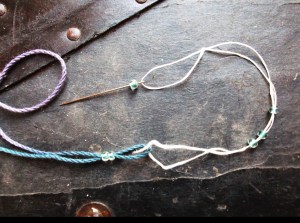
Thread dental floss through the sewing needle and tie a knot creating a loop, slip yarn through loop and fold back on itself (creating a link of 2 loops), thread beads onto sewing needle and slide them over the dental floss and onto the yarn
That being stated, I have been playing with ways to get beads in my stitches, and here is what has worked for me; a sewing needle and dental floss. Yes, it does sound a little funny, but it works better than other approaches for me (although I am always open to new ideas!).
First I thread the dental floss through the sewing needle, creating a tail on either side of the needle of at least 4” (10cm) (so a piece of floss at least 8” (20cm) long to begin with), and tie the ends making a loop. This loop is the trick. I then tread the yarn through the loop of floss and fold to back on itself; this creating what would appear to be 2 loops linked together. I using the sewing needle I thread through the beads and slid them down the needle, over the dental floss and then over the yarn.
So now I have them threaded, and the playing can begin.

